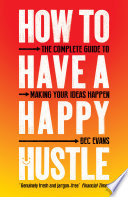

The first step in having a happy hustle is to define what your hustle is. This means identifying your passions, skills, and what you want to achieve. The author emphasizes the importance of aligning your hustle with your core values and interests. When your hustle resonates with who you are, it becomes more than just a means to an end; it turns into a fulfilling pursuit. This idea encourages readers to spend time reflecting on their personal and professional goals, ensuring that their hustle is meaningful and sustainable.
Continue readingA growth mindset is crucial for anyone looking to pursue a hustle. The book discusses how adopting a mindset that embraces challenges, learns from criticism, and finds inspiration in others can lead to greater success. The author provides practical tips for developing this mindset, such as setting realistic goals, celebrating small wins, and viewing setbacks as opportunities for learning. This idea is particularly relevant in today's fast-paced world where adaptability and resilience are key to thriving in any endeavor.
Continue readingOne of the central themes of the book is the importance of maintaining a healthy work-life balance. The author argues that hustling should not come at the expense of personal well-being. Readers are encouraged to set boundaries, prioritize self-care, and make time for relationships and hobbies outside of work. This idea emphasizes that a truly happy hustle is one that enriches all areas of life, not just professional ambitions. The book offers strategies for time management and stress reduction, which are essential for maintaining this balance.
Continue readingThe author highlights the significance of surrounding oneself with a supportive network of like-minded individuals. This network can provide motivation, accountability, and guidance. The book suggests that readers actively seek out mentors, peers, and communities that align with their hustle. Building relationships with others who share similar goals can lead to collaboration and new opportunities. This idea underscores the importance of connection in achieving success and happiness in any hustle.
Continue readingFailure is often viewed negatively, but the author argues that it should be embraced as an integral part of the hustle journey. The book discusses how many successful individuals have faced setbacks and how these experiences have shaped their eventual success. By reframing failure as a learning opportunity, readers can reduce the fear that often accompanies risk-taking. This idea encourages a more resilient approach to challenges and reinforces the notion that persistence is key to achieving long-term goals.
Continue readingAuthenticity is a recurring theme in the book. The author emphasizes the importance of staying true to oneself while hustling. This means being honest about one's strengths and weaknesses, as well as one's values and beliefs. The book encourages readers to avoid the trap of comparing themselves to others and to focus on their unique journey. By staying authentic, individuals can create a hustle that is not only successful but also deeply fulfilling. This idea resonates with the notion that true happiness comes from being genuine in all aspects of life.
Continue readingThe final key idea presented in the book is the necessity of continuous learning and adaptation. In a rapidly changing world, staying relevant requires a commitment to lifelong learning. The author encourages readers to seek out new skills, knowledge, and experiences that can enhance their hustle. This idea also touches on the importance of being open to change and willing to pivot when necessary. By fostering a culture of learning, individuals can ensure that their hustle remains dynamic and aligned with their evolving goals and the demands of the marketplace.
Continue reading